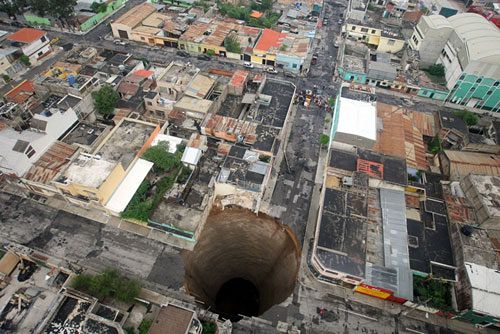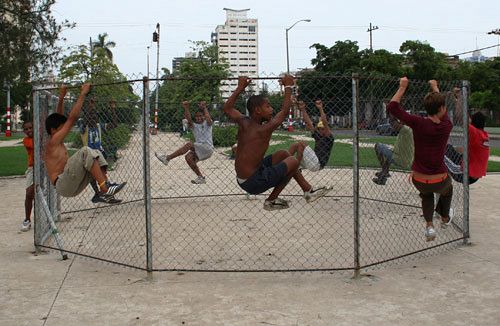TEOR/éTica
Located in San José, Costa Rica, TEOR/éTica is a non-profit, independent, private project dedicated to the investigation and promotion of contemporary art practices from Central America and the Caribbean.
TEOR/éTica’s endeavors can be grouped into four major categories: exhibition production, at both national and international levels; the promotion, documentation and support of regional artists; a strong editorial project (40 bilingual publications); and the organization of conferences and symposia.
Throughout its existence, TEOR/éTica has created an international cultural network and has gained recognition for generating new ways of thought. Virginia Pérez-Ratton (1950–2010), a Costa Rican curator and investigator, founded the project in 1999. After a brief hiatus, TEOR/éTica resumed its activities in February 2012.
Temas Centrales 2000
Temas Centrales was the first regional symposium to discuss artistic practices and curatorial possibilities. At the end of a decade in which several proposals had sparked relationships and cooperative work within the Central American artistic field, TEOR/éTica, under Virginia Pérez-Ratton’s direction, organized in October 2000 an event that brought together a large group of artists, investigators, historians, and cultural agents. The purpose was to share artistic proposals and discuss the most urgent problems present within the different contexts.
Temas Centrales 2012

This massive sinkhole in Guatemala City is thought to have been triggered by tropical storm Agatha, a violent storm that struck Central America in May 2010. This hole is still part of the landscape in that Guatemalan neighborhood. Photo: Paulo Raquec
In April 2012, TEOR/éTica and the Museuo de Arte y Diseno, organized the public conference Temas Centrales 2 with the participation of national, regional and international presenters, to analyze the region’s current situation from a thematic perspective, touching on specific aspects of the artistic and discursive production of Central America and the Caribbean. The seminar focused on the complex panorama of the first decade of the 21st century, questioning the concept of region through the following: a dialogue between spaces and institutional models that have become catalysts in their pertaining contexts; conversations amongst artists, curators, critics and cultural agitators that contend a more open situation and a certain level of internationalization; a platform for theorizing about the most prominent artistic practices in the region, such as performance; and a revision of the biennial model, fostered by a discussion between curators of certain “tropical biennials” that have modified the paradigm.
The Museum of Contemporary Art and Design

Neumofagia, 2012 artist Adán Vallecillo
Founded in 1994, The Museum of Contemporary Art and Design is an “open multiple space.” To comply with this ambitious idea, the institution defines and promotes, in a permanent way, the most recent tendencies and dynamics in the world of contemporary art and design throughout the Central American region, thus reinforcing their links within the Latin American and International context.
The Museum’s permanent collection has an important holding of Central American contemporary art, with renowned Costa Rican, Central American and international artists. These include a mixture of techniques and art languages: from painting, etching, drawing, and sculpture, to photography, installation, the intervened object, and video. The Museum’s website includes a growing list and online archive of Central American artists.
Despacio Gallery

Lucía Madriz, Situación especial. Installation view, Installation with Rondon happening
Located in San José, Despacio is founded by artist Federico Herrero. This space is currently reorienting its strategy and public function but the website includes information on past activities and events.
Jakob Karpio Gallery
Jacob Karpio Galería re-established itself approximately 22 years ago in San José, Costa Rica to become one of the leading galleries in Latin America. Its aim is to spread and promote contemporary art from different regions, but in particular Latin America.
La Pyscyna

Mauricio Esquivel, e-flyer for Y si se Ilena. Cómo sacan el agua?, La Pyscyna Arte
La Pyscyna is a collective that is interested in the production and thinking process of contemporary artistic practices that contribute to the cultural and social development of the region. It is also a space for encounters, founded in 2012, and located in Mercedes norte in the province of Heredia in Costa Rica. Its program is shaped by the dynamics of contemporary art: exhibitions, multidisciplinary projects, lectures, discussion forums, workshops, urban interventions, and collaborations with other local and international initiatives.
Members include: Edgar León, Stephanie Williams, Oscar Figueroa, Guillermo Vargas Habacuc, Javier Esteban Calvo, Fabrizio Arrieta, Anabelle Contreras Castro, Héctor Gamboa, Sergio Villena, Ernesto Calvo, and Concepción Padrino.
Reflecting the evolving landscape of the art scene, this platform will be updated as new information becomes available. Thanks to the artists and curators who have helped to shape and enrich the project to date.
Back to Mapping Central America and the Caribbean resource platform










